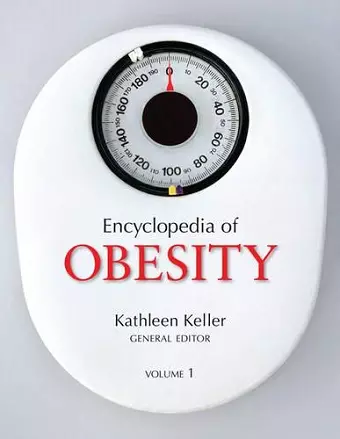Encyclopedia of Obesity
Format:Set / collection
Publisher:SAGE Publications Inc
Published:20th Mar '08
Currently unavailable, and unfortunately no date known when it will be back

"This work, featuring a reading level appropriate for high school audiences and above, is recommended for academic and public libraries."
—Library Journal
The Encyclopedia of Obesity is as much of a reference resource as it is a tool to raise awareness in the medical and public health communities. With almost 500 entries, these two volume summarize pertinent topics in obesity and related health conditions, including molecular biology, psychology, medicine, public health and policy, food science, environmental health, and pharmaceuticals. The editor has chosen topics that capture the current climate of obesity research while still addressing and defining the core concepts related to this condition. Based on a theme of "Moving Forward in an Ever Expanding World" articles address topics for a changing society that is slowly adapting to accommodate obesity, including recent lawsuits, new options for medical and dietary treatment, and the importance of prevention in children.
Key Themes
· Biological or Genetic Contributors to Obesity
· Children and Obesity
· Dietary Interventions to Treat Obesity
· Disordered Eating and Obesity
· Environmental Contributors to Obesity
· Health Implications of Obesity
· Medical Treatments for Obesity
· New Research Frontiers on Obesity
· Obesity and Behavior
· Obesity and Ethnicity/Race
· Obesity as a Public Health Crisis
· Psychological Influences/Outcomes on Obesity
· Societal Influences/Outcomes on Obesity
· Women and Obesity
· Worldwide Prevalence of Obesity
The Encyclopedia of Obesity is intended to serve as a general and nontechnical resource for biology, sociology, health studies, and other social science students, teachers, scholars, researchers, and anyone in the general public who wishes to understand the development of obesity as it prevails in the United States and worldwide.
"The United States has seen a dramatic increase in obesity over the last 20 years. This work, edited by Keller (human nutrition, Columbia Univ. Coll. of Physicians & Surgeons; research associate, New York Obesity Research Ctr.), seeks to be a starting point for those interested in learning about all aspects of obesity. There are approximately 500 entries, some with black-and-white photos. The scope is global: continents are listed as entries by geographical region, e.g., Asia is broken down into "Asia, Central," "Asia, East," etc. These entries contain brief historical overviews of obesity in various countries, obesity studies, and/or obesity prevention strategies. The appendix in Volume 2 has a section addressing the prevalence (according to the World Health Organization) of obesity in males and females by country. In addition to a glossary and an index at the back of both volumes, the encyclopedia also features a reader′s guide-in the front of Volume 1-that assists readers in finding articles by category or theme (e.g., ethnicity/race, children, social influences and outcomes, new research frontiers). Volume 1 also contains an explanation of the body mass index (BMI) and the BMI table. Although there are bibliographies at the end of entries, multiple references are lumped together in paragraph form, which may make it hard for some readers to distinguish among them. Since the bibliographies are not extensive, this encyclopedia would have benefited from including additional resources for patrons wanting more information. BOTTOM LINE Dana K. Cassell and David H. Gleaves′s Encyclopedia of Obesity and Eating Disorders (Facts On File, 2006, 3d ed.) is geared more toward a general audience and libraries with smaller budgets. This work, featuring a reading level appropriate for high school audiences and above, is recommended for academic and public libraries."
—Library Journal -- Rebecca Raszewski * Library Journal *
ISBN: 9781412952385
Dimensions: unknown
Weight: 3170g
1040 pages